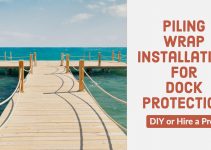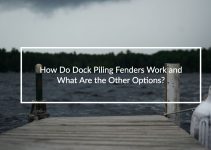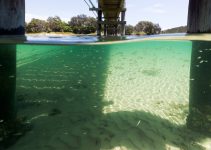Your dock is an investment.
Yet, this investment can be both exciting and a little overwhelming at the same time.
Docks are subject to many forces that can threaten, wear and tear them down faster and more significantly than many other structures you might choose to add on to your home.
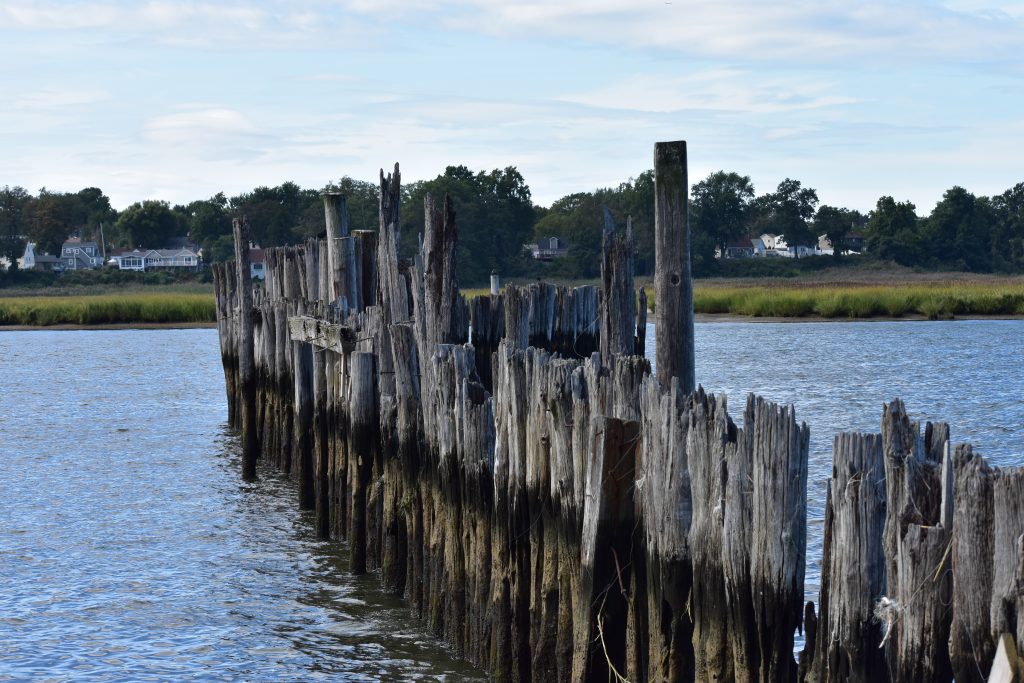
Thus, investing in a dock can make a homeowner a bit apprehensive since it’s clear this investment could essentially go down the drain if it’s not diligently managed with foresight, respect and care.
Perhaps the most important thing you can do to ensure this investment is guarded as well as possible – aside from choosing the best materials and dock builder for your project – is understand, discover and deploy dock protection concepts and products.
The Different Things that Can Damage a Dock
Weather and Natural Decay
Clearly, normal weather can impact the life of a dock. First, it can affect any of the components the dock is built with, from the smallest screws to the piers, anchoring, flooring, roof (if applicable) and more. Rust can be a concern, as well as other types of corrosion and erosion, too. Then, there are the “big storms” that sometimes beat up hard on coastal areas and the docks that live there.
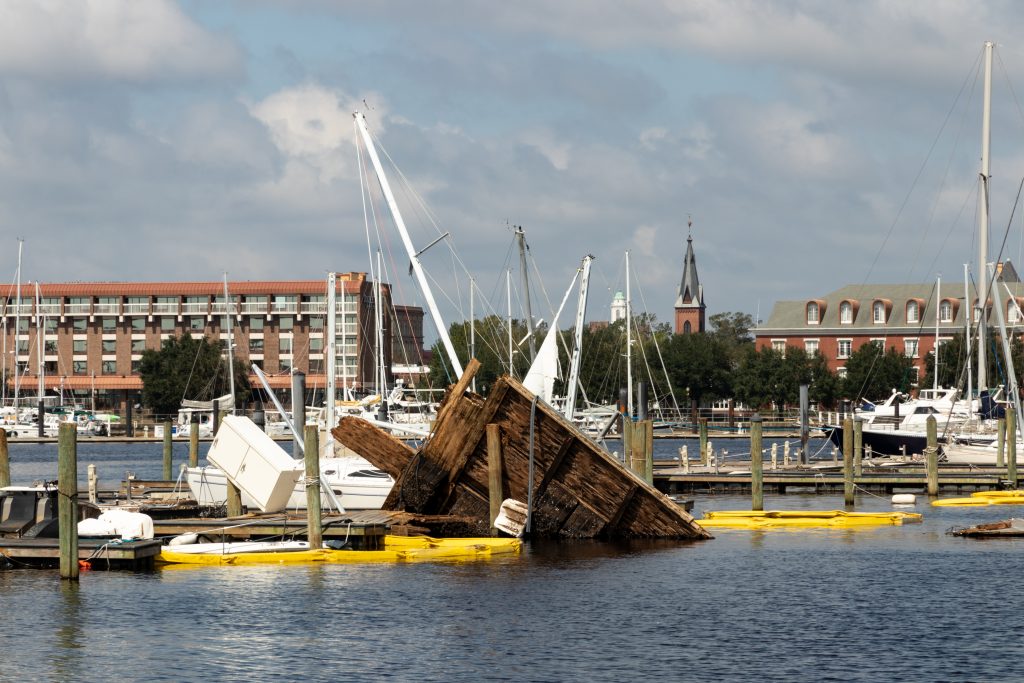
But let’s also not forget just “plain old’ decay—the standard decay that happens with many of the materials used in dock construction, specifically on dock piers and posts.
Water & Marine Biology
Water in general can help promote the degradation of dock piers and pilings. Only concrete pilings are somewhat immune. However, concrete piers generally aren’t practical for every dock and especially, not residential docks.
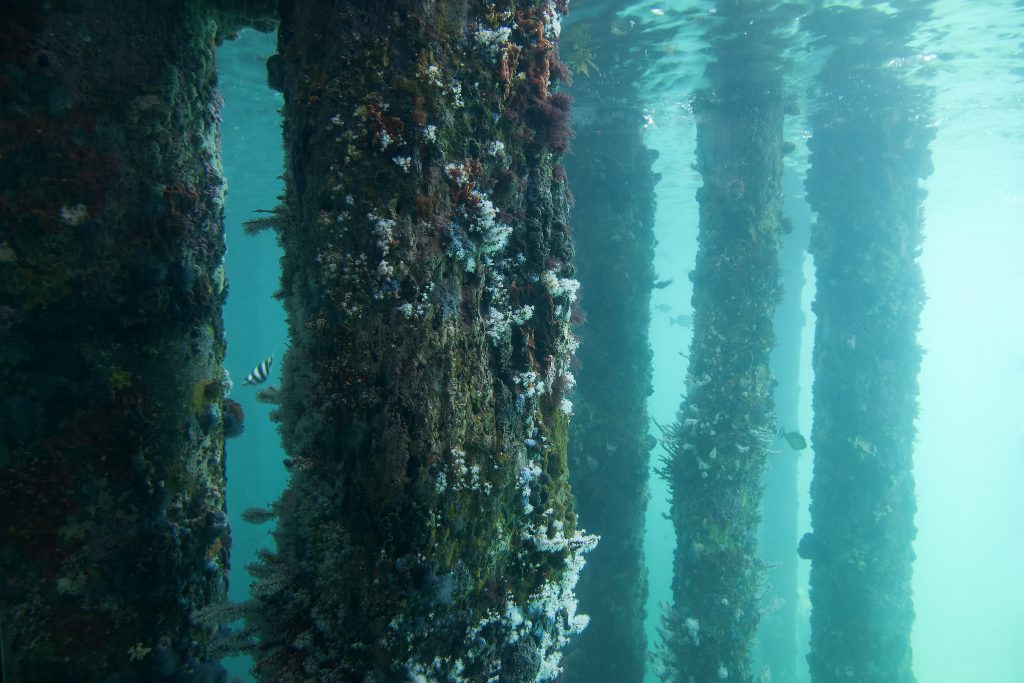
Additionally, one has to also consider marine life – from plankton to crustaceans, that like to hang on and cling to wood piers. And while these “living creatures” generally don’t harm dock piers and posts (and in fact, can sometimes make them stronger), these things definitely provide a danger to boats and people who might inadvertently brush against them.
People & Things
Really, this risk to your dock can be summed up by “regular wear and tear.” Docks are made to be used so this means they are going to also take at least some basic abuse that just naturally comes with use. This might mean getting kicked, nicked and broken during the course of the dock’s life or being bumped and smacked by boats or other PWCs. Any of these things can cause immediate costly damage or incremental damage to the dock that accumulates and also causes expenses to aggregate, over time.
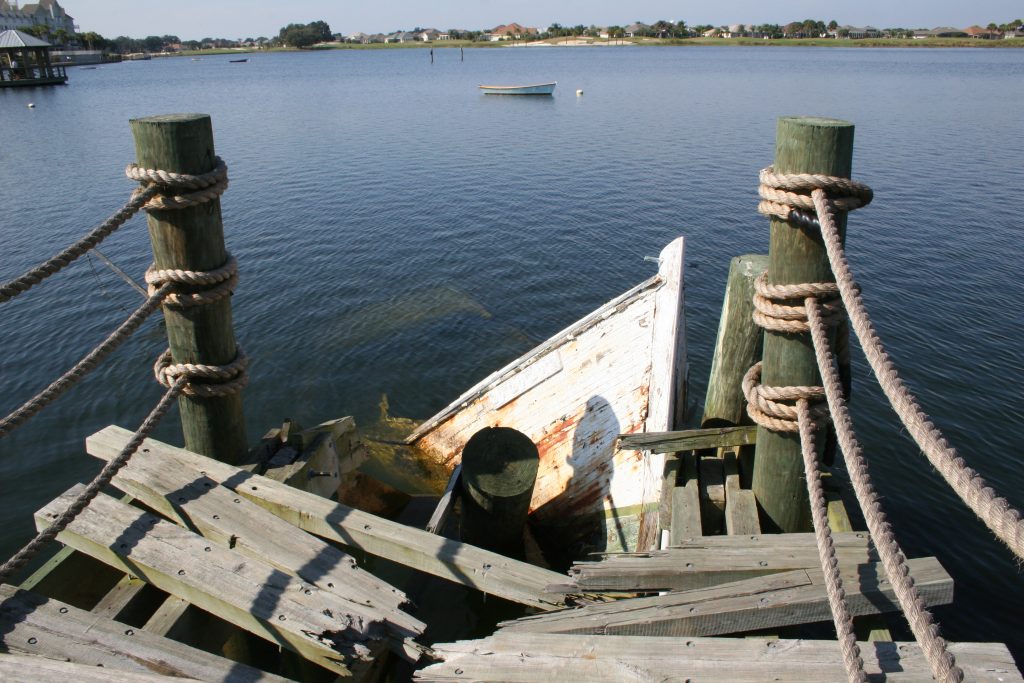
This may sound like all doom-and-gloom but of course, that’s not true. Docks can be a total blast and that’s one big reason people decide to build them in the first place. The key is merely – as with anything – the more you do to proactively prevent potential risks (and damage!) to your dock, the more you’ll be able to truly enjoy your investment, cost-effectively, over time.
How Can YOU Help Protect Your Dock Against Damage?
The following are some of the additional protections you can add to a dock to help keep it safe and preserve its longevity:
- Upgraded Dock Bushings
- Extra or Enhanced Bracing (for docks with roofs)
- Upgraded Dock Anchoring
- Dock Rails and Railing
- Dock Bumpers
- Dock Pier and Piling Protection
Of the above, perhaps two that are easiest to overlook but are very cost-effective to add, are dock bumpers and dock pier and piling protection options.
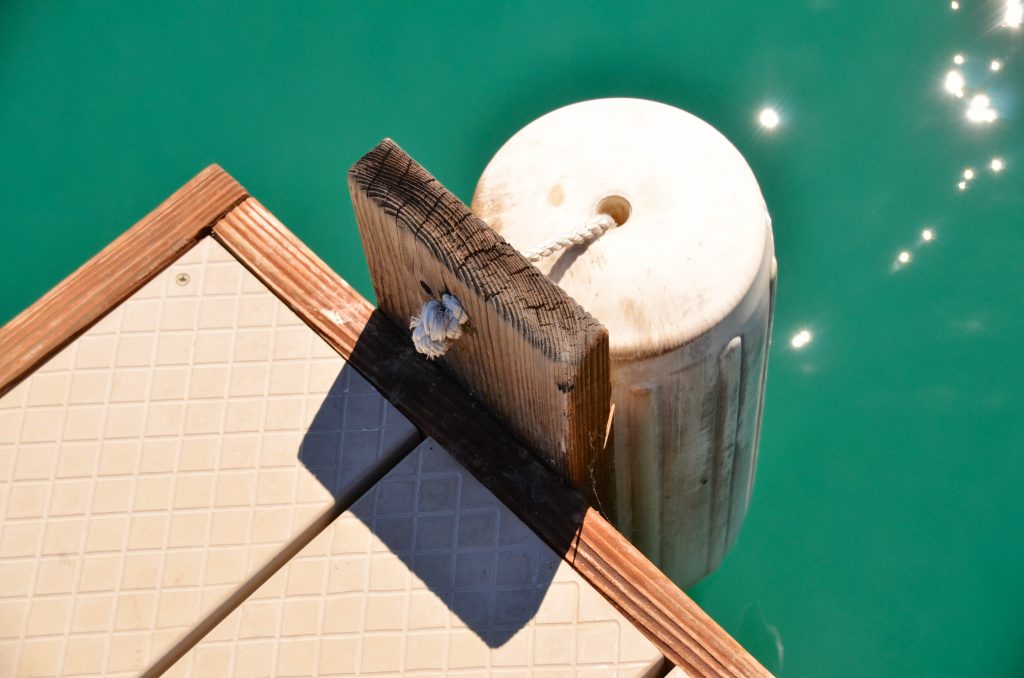
Dock bumpers help to protect your dock from people and things.
Dock bumpers can be an add-on when you build your dock, or they can easily be added on later. As stated on https://doityourself.com:
These boat dock bumpers are what keeps your boat from colliding with the dock and causing damage to the boat, the dock, or to both. Mostly made out of vinyl, rubber, or plastic, dock bumpers also keep boats from serious damage during storms as they bang up against the dock. Installing dock bumpers is a very easy task and can be done within a few hours.
Again, this is something you can do on your own and the instructions found on this article – “Install Dock Bumpers in 5 Steps” – guides you through it quickly and easily.
Piling protection simply helps your dock last longer.
Like the foundation of a house, piers or pilings are the foundation of your
dock. As such, it’s best if you factor pier protection into your dock planning
process at the beginning, so that your dock piers are protected from their
birth. Sure, pier and piling protection comes at a slight additional cost, but
it will very likely save you money in the long run.
On the other hand, if you’ve already built your dock (or even deck in some cases), piling or pier protection is still possible. Adding this extra layer of protection at any point will help to slow any erosion and damage from the elements that has already begun, as well as guard your dock posts and piles from additional physical damage or from creating a threat to persons and property who/that might also come in contact with your dock piers.
Basically, it’s never too early and never too late to consider dock and pier piling protection and this is something you really should consider for your dock’s safety and longevity.
Types of Piling Protection on the Market
The state of your piers or pilings will be a factor in the best option for your specific dock when it comes to your protection options. However, if you’re in the planning stages, you will be able to choose from the widest variety of choices.
Here are the major types of pier protection available:
Pile Sleeves
Pile sleeves are a pre-install or total replacement option for pile protection. Most must be put on the pole at the lumber yard and are heat-shrunk onto the pile so that it’s basically one with the pole, ensuring that water and marine organisms never come into contact with the wood. Most pile sleeves also protect from UV rays and are a very comprehensive form of protection to help prevent damage from ever happening in the first place.
Pile Wrap
Pile wrap can be put on piers in advance or after they’re already embedded. If the piers have been in use, they must be cleaned first. Then, sheeting – typically black vinyl – will be wrapped around the piles and secured. Usually, part of the sheet will be above water mark and the other, below the mud line.
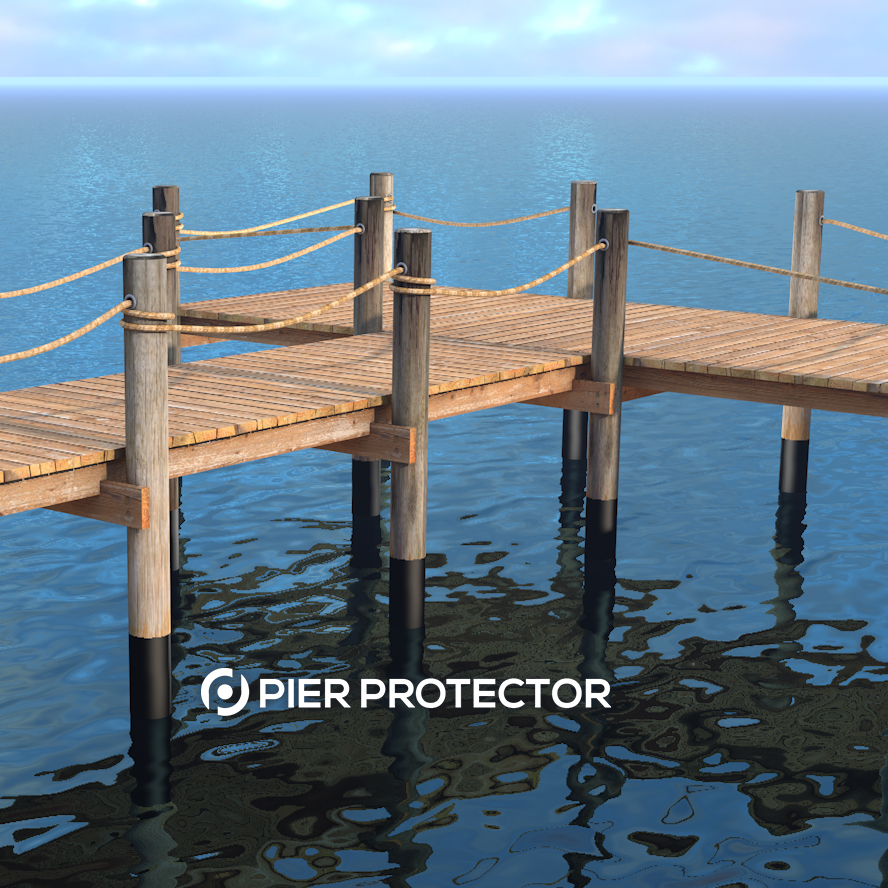
Our Pier Protector product falls into the pile wrap category but it’s somewhat unique in that it’s made from high-density HDPE plastic. This recycled plastic is stronger than vinyl over time, yet still malleable.
Here are some highlights of Pier Protector:
- Significantly increases lifespan of dock pilings with the use of a durable, long-lasting high-density polyethylene plastic with UV stabilization, protecting from sun damage.
- Lowers maintenance time with worry-free parts. Plastic that can last a lifetime and stainless steel ring shank nails to avoid rusting.
- Prevents corrosion, standing up to all elements (water, acid, salt, soil), as well as destruction from pesky woodborers.
- Creates a sleek, streamlined aesthetically pleasing look to your dock.
Snap Jackets
Snap Jackets are typically only a consideration for larger, commercial, piers but since they do still fall in the pier protection category, we’ll mention them anyway. Snap jackets are two big pieces of fiberglass that “snap” on to the pole. Then, the gap between the pole and the “jacket” is filled with concrete.
Piling Caps
Piling caps don’t protect the “meat” of the piling but still help to protect or preserve the life of the piling by preventing UV damage to the top of the pole. They also deflect rainwater from pooling on pole tops and can discourage birds from roosting (and wasting) on the pier. They’re also a really nice aesthetic addition and come in multiple different sizes, shapes and colors.
You built your dock for fun! And you want to make sure it keeps bringing you joy throughout the dock’s – and your – lifetime. Dock protection options help ensure that happens, with a goal of making sure your dock investment is secure and protected over time.

Whether you consider dock protection in the planning or as an afterthought, it should be a thought at some point and although there is an associated cost to dock protection, it is one you will likely recoup tenfold or more over time.

